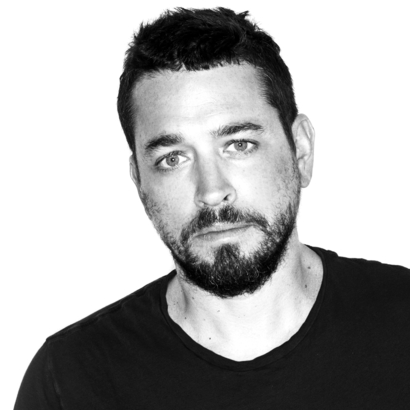For the past decade or so, we have lived in the age of the branded, sponsored, experiential, celebrity-hosted, collabed, hashtagged event. Get a group of people together, throw in a couple of influencers, come up with some clever hashtags, and voilà, activation. Having written about a restaurant or two, my in-box is stuffed so full of invitations to branded events that if attending them came with benefits and a 401(k) I could make a career out of going to them.
Most invitations get deleted the second you see the subject line. “Oral B and Cap’n Crunch invite you …”—delete. But when I saw the subject line of an e-mail a month ago that included the names “Dom Pérignon” and “Francis Mallmann,” the speed at which my brain commanded my fingers to type, “YES, I WILL ATTEND,” would have astonished even the most jaded in the neuroscientific community.

If you don’t recognize the first name, I’m sorry but we can’t be friends. The second name belongs to one of the world’s most celebrated chefs, the cultish Argentine open-fire madman Francis Mallmann. Dom Pérignon was flying Mallmann in for three nights to prepare his signature meals of wood-fire-roasted meats and other Argentinean specialties at a private home in Water Mill while guests were served two newly released vintages (2006 and 2015) of Dom Pérignon—pricey at $4,000 a head, but if you drink as much as I can, a bargain. Even if that private home was a meth lab on the wrong side of 27, I was in.
And so I found myself a few weeks later on the waterfront lawn of a massive estate in Water Mill overlooking Mecox Bay, imagining I was Nick Carraway in West Egg. Mallmann, who shot to global stardom when he was featured on an episode of Netflix’s Chef’s Table a decade ago, is a throwback himself, but to a different age: when man discovered fire. His is a primal and rustic form of cooking, how we did it for thousands of years before the invention of modern cooking tools and appliances. Mallmann in the Hamptons was a wonderful clash of cultures: open flames and burning wood on pristine manicured lawns, ash and soot on white jeans.
Mallmann had erected a massive metal dome over a large fire pit. Giant beef ribs and chickens dangled over the fire on meat hooks, cooking slowly in the heat and smoke. There were vegetables and pineapples hooked to the contraption, roasting away. It looked like something out of a horror movie set in a Whole Foods. Two long curved, mirrored tables wrapped around the dome in a semicircle, like a joint venture of Medieval Times and Studio 54.

There were fire pits everywhere, planchas sizzling, and the 68-year-old Mallmann in a black beret and long red string tie dangling over his chef’s jacket. He was overseeing a staff of cooks, not barking orders, but quietly watching this empire of fire and fat that he had so lovingly assembled that morning. I spoke to him briefly as he was pulling a pan with a giant mound of salt on it out of an outdoor oven. He cracked the salt crust with a knife and showed me the glistening flesh of an arctic char that would soon be served. He pointed to the dome, like a proud papá, and told me much of the meat had been cooking all day.
Mallmann in the Hamptons was a wonderful clash of cultures: open flames and burning wood on pristine manicured lawns, ash and soot on white jeans.
While we waited, the Dom Pérignon was being poured generously. I preferred the younger 2015 at first, before coming around to the more nuanced depth of flavors of the older 2006 as it opened up. Or maybe it was the other way around. Let me come clean: after at least half a dozen glasses of both vintages before dinner, I had no idea which one I was pouring down my throat at land-speed-record rates, just that they were both outrageously good. I began to worry that in a replay of Red Lobster’s bankruptcy-inducing all-you-can-eat shrimp promotion, I might put the storied champagne out of business in one night.
Thankfully, before I toppled over, we were told we could sit down, and the barrage of food began. Course after course of exquisitely cooked meats, vegetables, potatoes, empanadas, and chimichurri. Slow-cooking food over the radiant heat and smoke of an open wood fire is a long yet rewarding process. It’s logistically complicated and hard to execute well. But Mallmann may be the best in the world at it.

The earthy, smoky, and perfectly prepared meat was so tender it simply melted. Nothing needed to be described, which I appreciated. We didn’t have to hear a lengthy speech about the complexity of ingredients and the process; we saw how it was made. They just put a plate in front of us and said: “chicken,” “rib eye,” “arctic char.”
On the surface, Francis Mallmann and Dom Pérignon might seem like an odd pairing. Sure, Dom Pérignon is expensive, and a signifier of wealth and privilege. But that’s marketing. What makes it special is its history. This is a wine that is still produced as closely as possible to the way it was first made by a Benedictine monk in the 17th century. They were still roasting meat over open fires back then, as Mallmann continues to do today. Aside from the McMansions dotting the horizon, it’s possible a meal almost identical to this one was served 400 years ago.
In the modern world, there aren’t many opportunities to experience something like that. And it’s worthy of being called an event.
Dana Brown is a Columnist at AIR MAIL. A former deputy editor at Vanity Fair, he is the author of the memoir Dilettante: True Tales of Excess, Triumph, and Disaster


